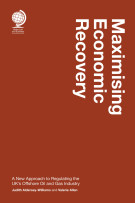
In olden times, we entered into partnership in a law firm and staggered on until we were carried out feet first. There was no need for a book of this nature. Nowadays, entry into partnership is considered by many as just one rung on the ladder of an upwardly mobile and glorious career: or perhaps not. I practised in the field of partnership breakdown for many years towards the end of my career and felt the lack of a “bible” such as this. We had to make it up as we went along. Ronnie Fox, the editor, with his unerring eye for spotting gaps in the legal profession has done it again. This book was needed. In fact, every new partner should be presented with a copy which should have a prominent place on the bookshelf, to be dusted off in times of stress and consulted in depth when the time is right, although by then it may be a more contemporary edition. But beware: however good the book is, there is no substitute for tailor-made legal advice as the authors all confirm. Inevitably in a book with a different author for every topic there is a varying approach and sometimes a clash of styles but it hardly matters. These serve to give the reader a three dimensional approach to the subject. This book can be read from cover to cover in one sitting or dipped into for specific topics that are of concern . In future editions, an index would be helpful and make the book more user friendly. The most important section is probably the first one: Partner Retirement- A Firm’s Perspective by Corinne Staves. Though slanted towards the interests of the firm as a whole, it should be read for its insights by the individual partner. Not only does the author give a succinct summary of the relevant law but also indicates the “pressure points” where negotiation and compromise are very likely to be required. In passing, as a former practitioner in the field, I am interested that what were half articulated ideas in my day are now fully established principles. Legal Issues from the Individual Partner’s Point of View by Ivor Adair and Caroline Field contains far more information and is somewhat less easy to use. The potential reader may be a partner facing termination and in a somewhat emotional state. Everything he or she needs to know is included but it may be hard to find especially since such a partner is almost certain to seek legal advice anyway. I do view the first section as very much the model of how such a chapter should be structured. Paul Beber, author of Accounting and Practical Considerations, comes across as the type of “wise old head” that you would like to have in your corner. His points are all supremely relevant and he has obviously advised many times in these types of situations. “Why didn’t I think of that?” will often be the question for the reader here. It is often so easy to overlook what is staring you in the face with extremely damaging consequences. Tax Considerations by Nicky Morgan reminds me what a patchwork labyrinth, to mix metaphors, our tax system has become. It was bad in my day but it is now much worse. I feel she had no alternative but to structure her topic in this way. Tax simplification is the ultimate oxymoron. I will never understand overlap relief. You cannot underestimate the emotional impact of partner retirement and psychotherapist Micheline Hogan does not try. Having been one of the defendants in the leading and long running case of Hurst v Bryk, there were many times when I could have made use of her soothing services. This chapter is important for both sides in a partnership dispute in order to know themselves. Veronica Mann in Financial Aspects of Retirement Planning: a 10-Point Plan paints the broad picture with which I hope most partners will be acquainted but I forget how busy specialists can be, so concentrated on their own subject that they are ignorant of what is going on in the rest of the world. Anyway, it does no harm to restate them here. Once again, specific advice is required. Having practised as a solicitor for the whole of my career, I found “Another Career” by Roderick Chamberlain a little disappointing. It is general in terms and not specific to lawyers’ needs. He makes no mention of the many opportunities available in the judicial field: full or part time: from dog shows to the Supreme Court! Some of my contemporaries enjoyed fruitful further careers part time as adjudicators in the tribunal field. Two part time appointments equalled one full time one with a compulsory cut off due to age. Overall, I strongly recommend this book.





